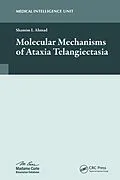Ataxia telangiectasia (AT) is an incurable, rare autosomal recessive genetic disorder which affects approximately one in 40,000-100,000 and the carrier frequency is estimated to be 1:100-200. In the United Kingdom it affects 1 in 300,000 live births amounting to about 5 or 6 cases per year. Although the medial survival rate of affected persons is b
Autorentext
Shamim I. Ahmad, after obtaining his Master s degree in Botany from Patna University, Bihar, India and his PhD in Molecular Genetics from Leicester University, England, joined Nottingham Polytechnic as Grade 1 lecturer and subsequently promoted to SL post. Nottingham Polytechnic subsequently became Nottingham Trent University where after serving for about 35 years he took early retirement to spend the remaining time in writing books and full-time research. For more than three decades he worked on different areas of biology including thymineless death in bacteria, genetic control of nucleotide catabolism, development of anti-AIDS drugs, control of microbial infection of burns, phages of thermophilic bacteria and microbial flora of Chernobyl after nuclear accident. But his primary interest which started 25 years ago is the DNA damage and repair, particularly near UV photolysis of biological compounds, production of reactive oxygen species and their implications on human health including skin cancer and xeroderma pigmentosum.
